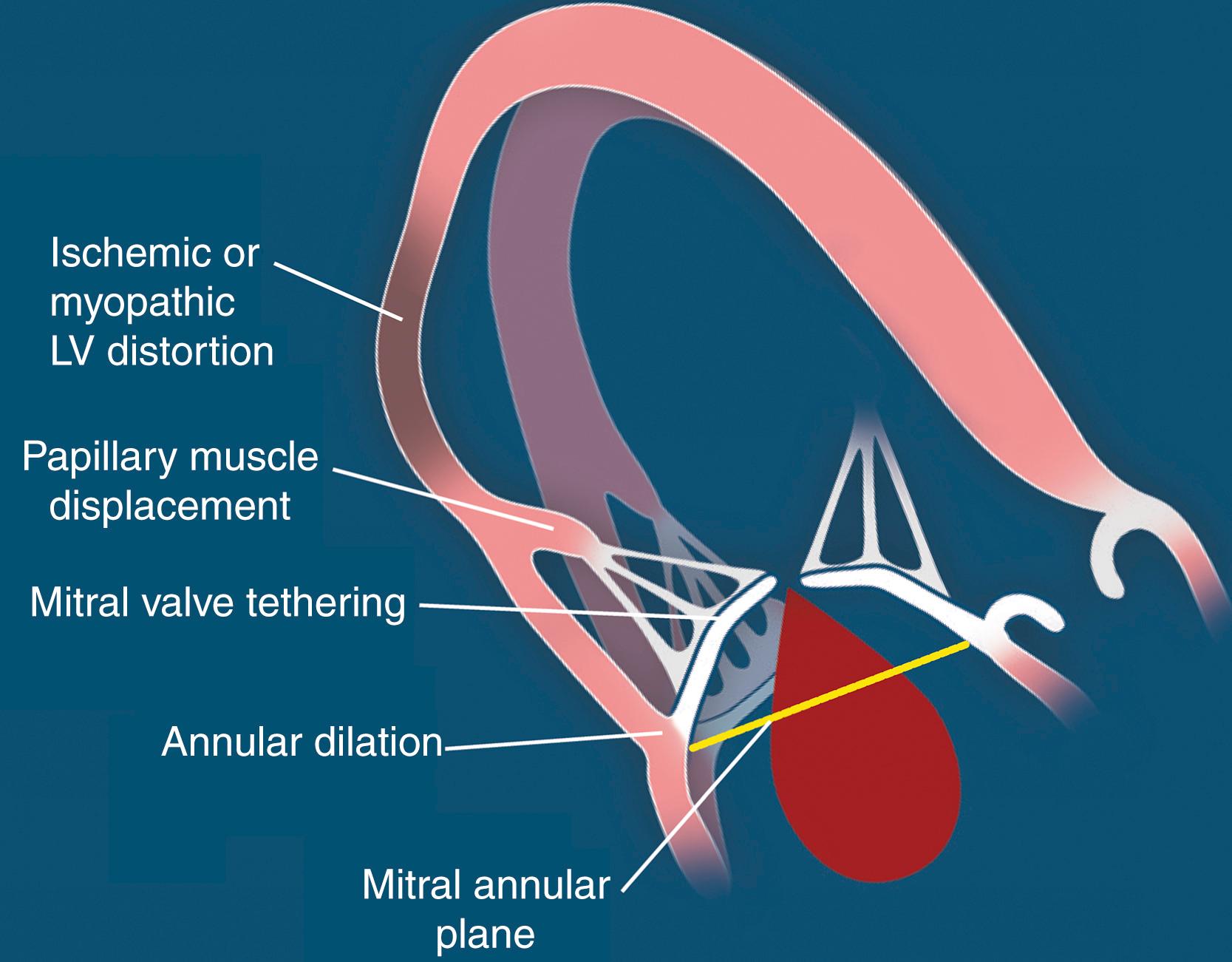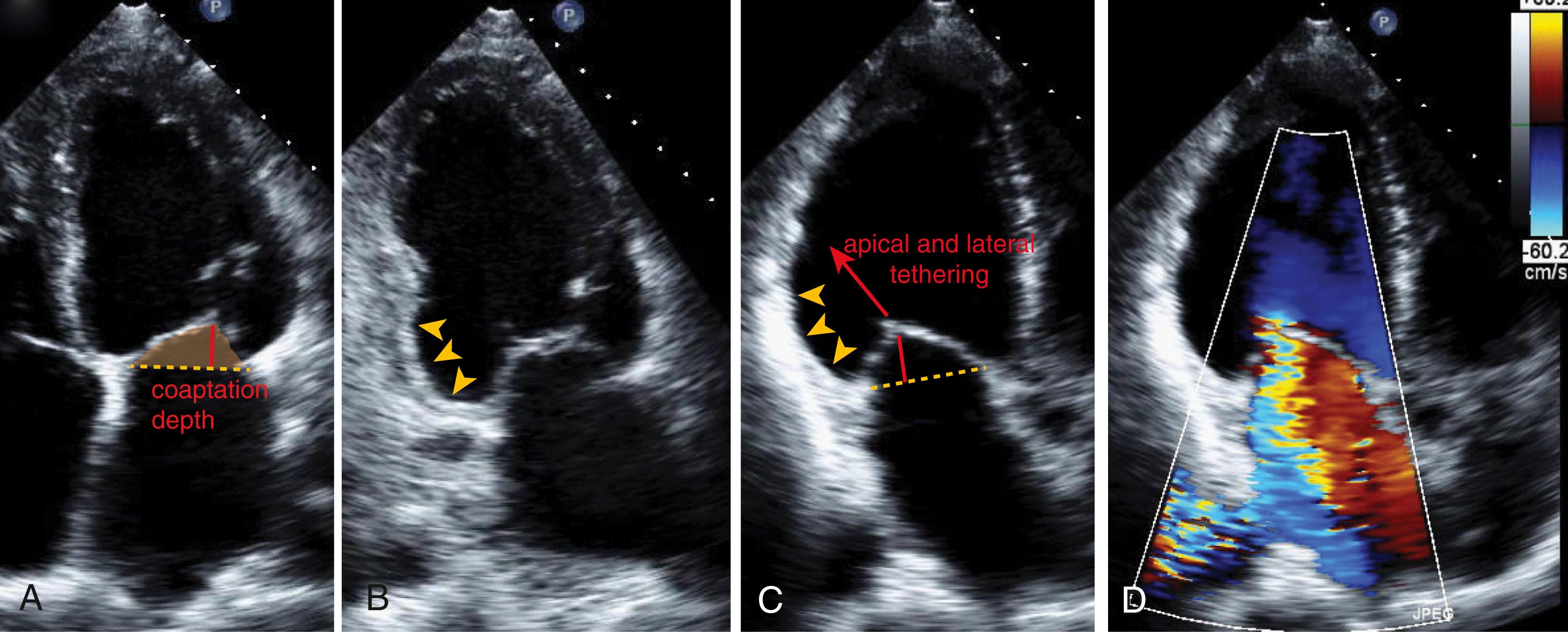Physical Address
304 North Cardinal St.
Dorchester Center, MA 02124
The authors acknowledge the contributions of Drs. Jacob Dal-Bianco, Robert Levine, and Steven Goldstein, who were the authors of this chapter in the previous edition.
Mitral regurgitation (MR) is a frequent complication of myocardial infarction (MI), severe coronary artery disease, and congestive heart failure that is associated with an adverse prognosis independent of underlying left ventricular (LV) dysfunction. In the medical literature, several terms have been used to describe this type of MR. Ischemic MR is a commonly used but ill-defined term because nonischemic cardiomyopathy is equally relevant. Functional MR refers to the presence of MR without any structural abnormality of the mitral valve (MV) leaflets or chordal apparatus. Secondary MR is the more encompassing term, referring to the mechanism that is secondary to nonvalvular pathology (as opposed to primary MR ), typically in the setting chamber dilatation caused by coronary artery disease, nonischemic cardiomyopathy, or congestive heart failure.
In a majority of patients, the initial insult in secondary MR is ventricular . In ischemic heart disease, it is primarily the remodeling that follows MI or ischemia that causes the MR rather than being caused by active or reversible ischemia. Acute ischemia can sometimes cause fluctuating MR or severe acute MR because of papillary muscle rupture, yet this is not prevalent. Alternatively, atrial functional MR in the setting of atrial fibrillation or heart failure with preserved ejection fraction is increasingly recognized as a distinct form of secondary MR, with different mechanistic basis and different management options. Isolated annular dilatation, annular flattening, and impaired annular dynamics are thought to be the culprit cause of the regurgitation, whereas LV size and function are typically normal in atrial functional MR.
There is clinical heterogeneity of secondary MR in various clinical situations. The following sections focus on the unifying mechanisms in secondary MR, the echocardiographic diagnosis, and the implications for prognosis and management.
Mitral leaflet morphology is essentially normal in secondary MR. The primary cause of MR is ventricular distortion of the normal spatial relationship of the MV apparatus and the left ventricle. With adverse LV remodeling (dilatation and change of shape), one or both mitral leaflets are pulled apically into the left ventricle and radially away from the center of the left ventricle because of the outward displacement of the papillary muscles that results from remodeling. This results in incomplete mitral leaflet closure, in which the leaflet coaptation point is apically displaced ( Fig. 97.1 ). This pattern is best seen in the apical four-chamber view. The leaflets are apically displaced and tethered and may restrict mobility, especially of the posterior leaflet ( Fig. 97.2 ).


Video 97.2. Mitral leaflet tethering caused by left ventricular remodeling. A, Transthoracic echocardiogram (apical four-chamber view) illustrating tethering of both the anterior and posterior mitral leaflet due to inferolateral left ventricular wall motion abnormality and remodeling. The coaptation is apically displaced (coaptation depth, red line ) above the annular plane (dashed line) . A tenting area can be measured as well (shaded area) . B, Apical two-chamber view shows inferobasal wall motion abnormality (arrowheads) with severe leaflet tethering. C, Apical long-axis view demonstrates apical and lateral leaflet tethering with increased tenting of the valve (i.e., increased coaptation depth; red line ). D, There is severe secondary mitral regurgitation by color Doppler.
Become a Clinical Tree membership for Full access and enjoy Unlimited articles
If you are a member. Log in here